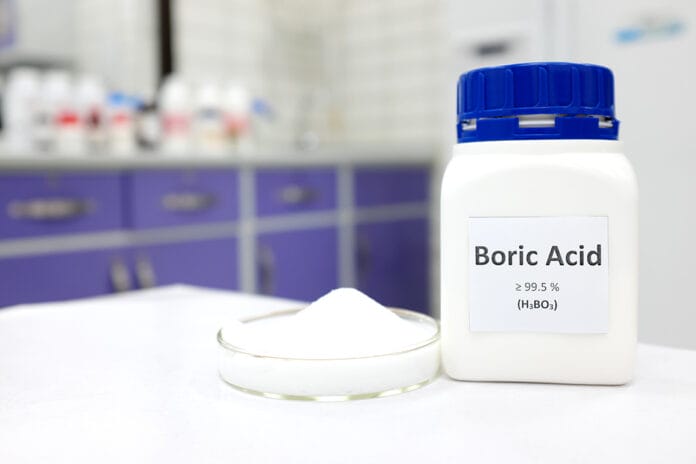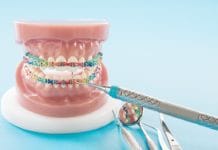Boric acid is a popular remedy for a variety of health concerns. The International Journal of Dental Hygiene recently published a systemic review titled “Boric acid as an adjunct to periodontal therapy: A systematic review and meta-analysis” that analyzed its efficacy on patients who suffer from periodontal issues.
More Information About Boric Acid
Boric acid, also known as hydrogen borate, is a white powder with antifungal and antibacterial properties. Although boric acid is commonly used as an insecticide to kill household pests like roaches and ants, it can also be used to fight common fungal infections like athlete’s foot or vaginal yeast infections. Some people also use small quantities of boric acid to create a homemade eyewash solution to treat bacterial infections and flush out harmful pollutants. Other effective applications of boric acid include household cleaning and disinfectant, facial acne, and eye irritations.
Boric Acid Safety Precautions
Despite its many uses, prolonged exposure to the chemical can harm the body’s endocrine system. That’s why it’s important for people to only use boric acid in a safe and correct manner. The chemical should never be ingested or applied to open wounds that are bleeding because it could be fatal. Children and pregnant women should also stay away from boric acid. If they are exposed in any way, regardless if it’s for a short period of time or not, they should immediately seek medical help.
As a general rule, you should avoid placing boric acid on countertops or any surface where you prepare food or touch them on a regular basis. If the chemical gets on your skin, you should wash the area thoroughly until it’s gone.
About the Study
The study was conducted by a pair of researchers named Nasir Zeeshan Bashir and Milan Krstic. Both of them work in the School of Dentistry at the University of Birmingham in the United Kingdom. Bashir and Krstic decided to evaluate the efficacy of boric acid as an adjunct to non-surgical periodontal therapy versus placebo. They decided to examine a group of patients diagnosed with periodontitis and measure their clinical attachment level (CAL), and any probing pocket depth (PPD) changes.
For the purposes of the study, Bashir and Krstic decided to look at research results from four popular medical electronic databases: Web of Science, PubMed, EMBASE via OVID, and Cochrane CENTRAL. The team looked at the clinical outcomes and meta-analysis using the mean difference with standard deviations.
They measured and compared the patient’s Probing Pocket Depth after three months and then again after six months had passed. They observed a mean additional reduction of 0.58 mm after three months, which was statistically significant. Meanwhile, at the 6-month mark, they noticed the pocket depth reduced an additional 1.18 mm at six months when compared with the placebo.
Meanwhile, the researchers noticed the patient’s Clinical Attachment Level increased over time. For example, the mean increased to 0.62 mm in the three-month period. By the end of the six-month period, the patients had a mean additional gain of 1.24 mm compared to the placebo group. Although Bashir and Krstic examined each study for possible adverse events that could have been caused by boric acid, they didn’t find any.
Overall, Bashir and Krstic revealed the use of boric acid in non-surgical periodontal therapy is not linked to adverse events and was powerful enough to improve the patient’s outcomes over an extended time period.















